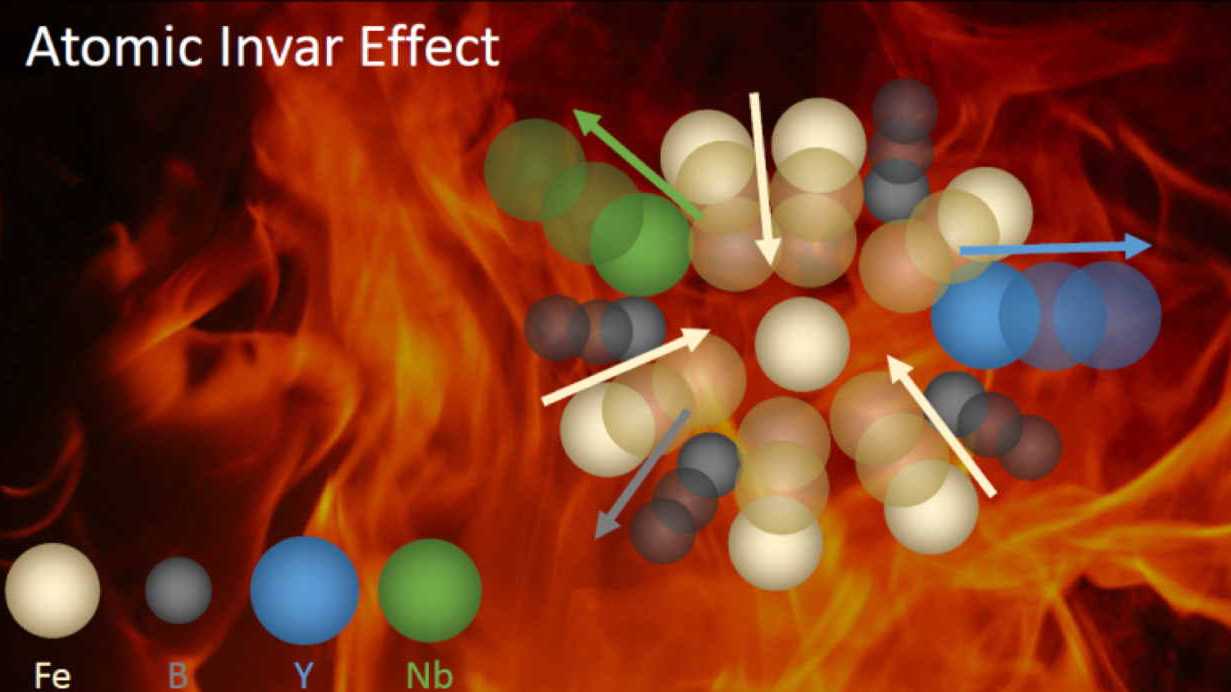Invar Effect in Fe-based Bulk Metallic Glasses
In a recent Nature Communications publication, researchers at the Laboratory of Metal Physics and Technology unravel via multiple length-scale analysis the Invar effect, universally observed in magnetic Fe-based glasses. On the atomic scale it strongly affects the average Fe–Fe pair distance and can even cause thermal contraction of the Fe–Fe pairs.

In 1897 the ETH Alumnus Charles É. Guillaume (Nobel Prize in Physics, 1920) discovered that FeNi alloys with 36 wt.% Ni exhibit an exceptionally low coefficient of thermal expansion (CTE) below the Curie temperature, TC, and that it increases drastically above TC. This correlation of thermal expansion with the alloy's magnetic state is known as the Invar effect. It is rare in crystalline materials, but has been universally observed in ferromagnetic Fe-based bulk metallic glasses (BMGs). Here, it is expected to result from the disordered atomic arrangement of BMGs, because their crystalline counterparts do not show this effect.
Because only little is known about the origin of the Invar effect at the atomic level, the authors of the external page Nat. Commun. publication studied this effect in quaternary Fe–B–Y–Nb and Fe–B–Y–Mo BMGs at multiple length scales, deploying time-resolved synchrotron X-ray diffraction, macroscopic dilatometric measurements and vibrating sample magnetometry (VSM). Deriving reduced pair distribution functions (rPDFs) from the XRD experiments, they reveal that it has a clearly observable atomistic origin and is mainly facilitated by the magnetic interaction of Fe–Fe. However, also higher-order atomic shells composed of multiple atomic species can contribute to the Invar effect, revealing that it occurs at all length scales in agreement with the macroscopic dilatometric measurements. With the observation of the Invar effect in the rPDFs over a wide range of length scales, the authors conclude that any disordered atomic arrangement can contribute to it. They are thus able to explain the universal occurrence of the Invar effect in amorphous Fe-based magnetic materials, as opposed to the rare existence in crystalline alloys.
- Atomic structure evolution related to the Invar effect in Fe-based bulk metallic glasses, A. Firlus, M. Stoica, S. Michalik, R. E. Schäublin, J. F. Löffler, Nat. Commun. (2022). external page DOI:10.1038/s41467-022-28650-9
- Laboratory of Metal Physics and Technology, ETH Zurich
- external page Diamond Light Source Ltd., Didcot, Oxfordshire, UK
